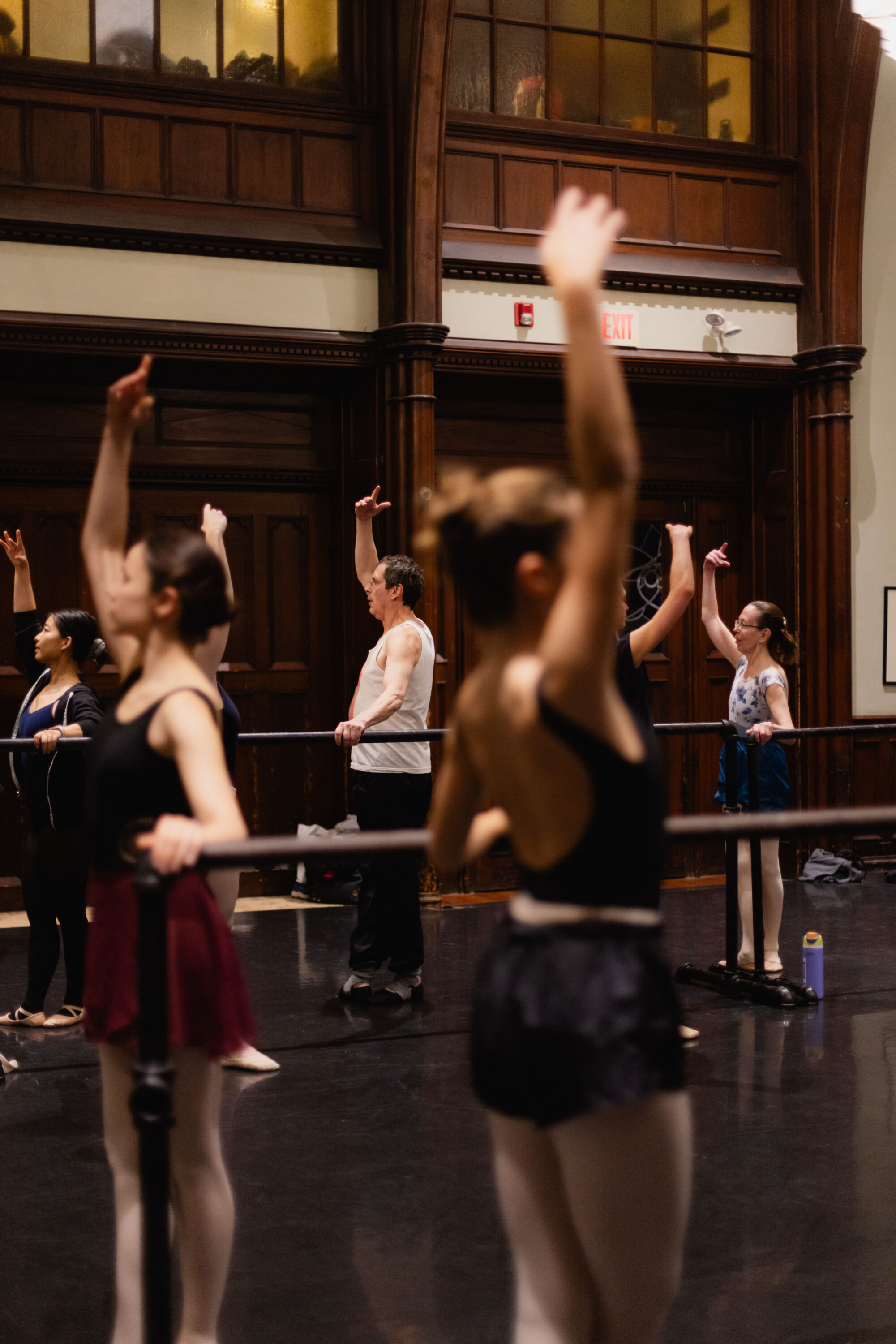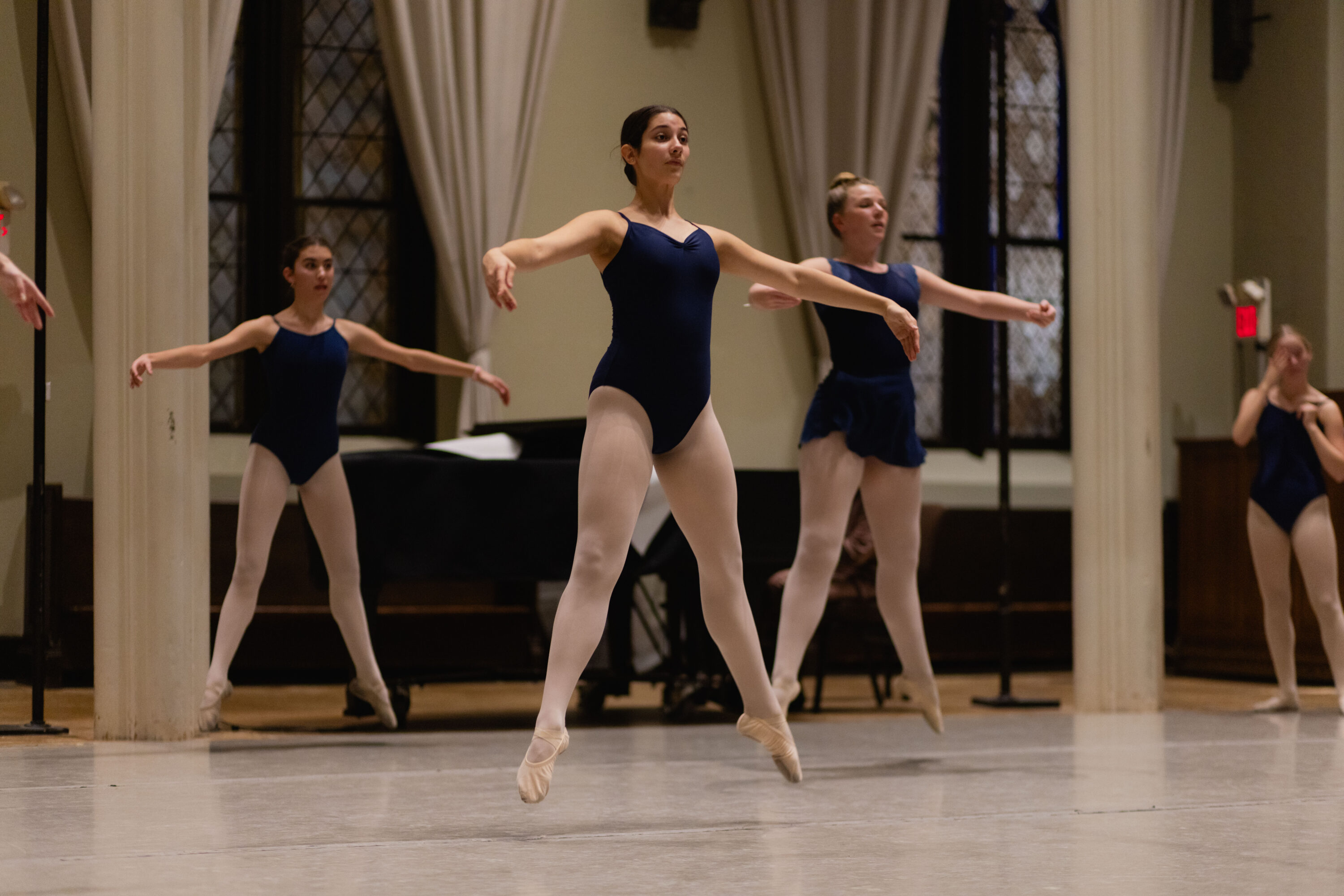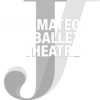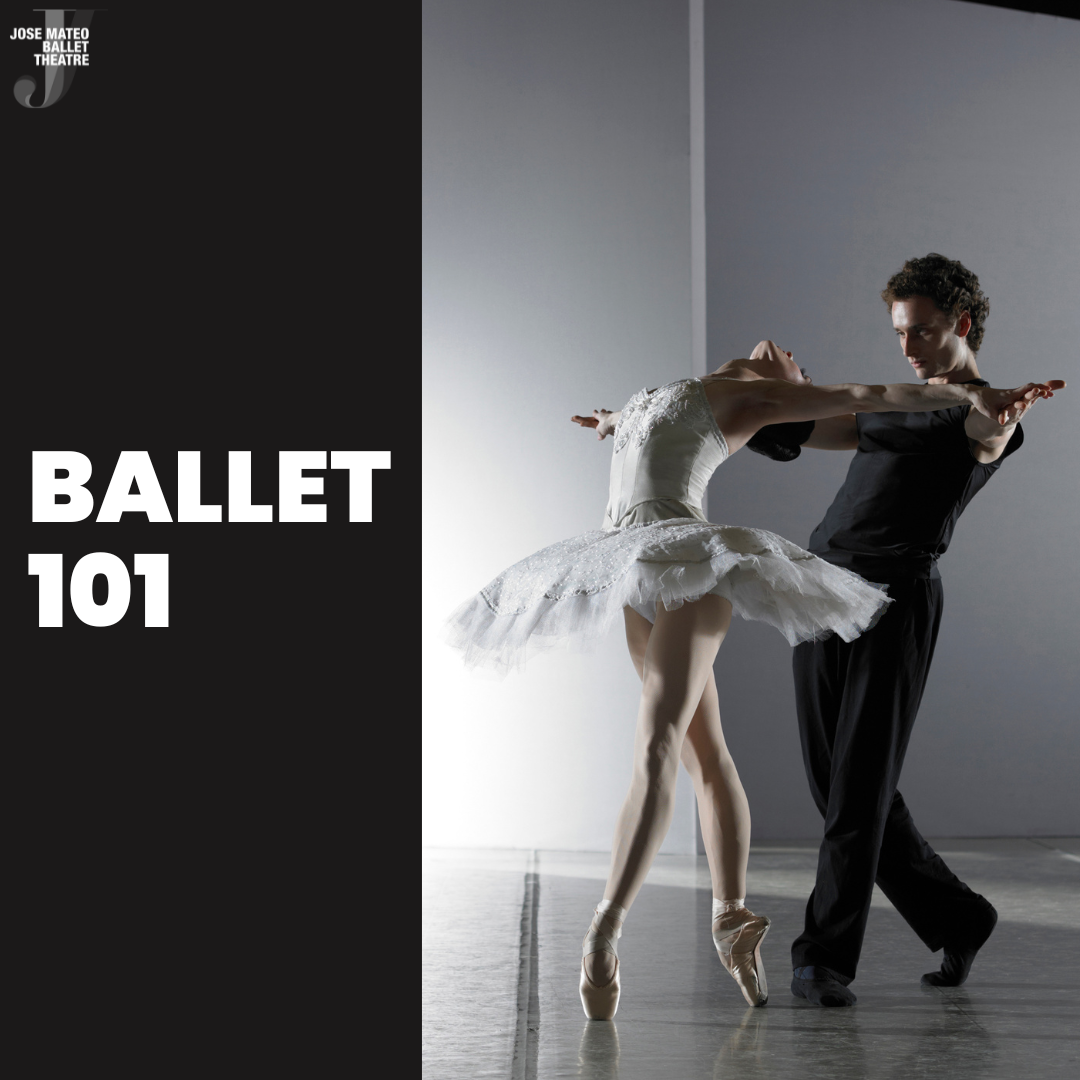You just read our first blog on everything you need to know about your first ballet class and have purchased your ballet shoes, laid out your outfit, and are ready to do some pirouettes. But wait, will we actually be doing pirouettes in our first ballet class? What exercises will we be doing and how will I know any of the steps?
Good news: the structure of a typical ballet class is laid out below, and will be almost always the same no matter what dance studio you go to, or if you are a beginner in your first class or a professional dancer.
In general, a ballet class is divided into two parts: Barre and Centre.
The first part of class, dancers use the barre – a horizontal bar that dancers hold onto for assistance with balance while they perform a series of exercises to warm up, stretch and perfect ballet technique. At the barre and throughout ballet class, exercises will progress in difficulty, movement, coordination and speed. The beginning steps and exercises tend to be slower and smaller with the intention of warming up the body gradually and progressing through technique.
The typical order of exercises at the barre is as follows:
- Pliés and Grand Pliés (to bend): Pliés are leg bends performed with the knees.
- Tendus (stretched): Exercises to work on leg extension while keeping the foot in contact with the ground. They are performed to strengthen the muscles of the legs and improve the precision of the movement.
- Degages, Glisses, Jetés (disengaged, throw): Like tendus but the working foot is raised slightly off the ground.
- Ronds de jambes: Circular movements of the leg that can be performed by keeping the foot in contact with the ground (à terre) or by raising it off the ground (en l’air). RDJ helps to work on leg rotation and connection to the center of the body.
- Fondus (sinking down): Like plies, except on only on the supporting leg. It works on strength and balance.
- Frappés (to strike): Quick movements in which the working foot is forcefully extended, either off the ground, or by the instep striking the ground.
- Développés (developing movement) and Adagio: Slow and fluid exercises in which the leg unfolds to show extension in an open position, working on flexibility and control.
- Grands Battements: High, powerful leg lifts following the process of tendu and degage.

The barre is then removed for the second part of the class in which the students move to the center of the studio. Centre work consists of more dynamic and full body movements that incorporate all the steps done at the barre. These exercises must be performed without assistance and generally move around the studio, involving the entire studio space.
Centre exercises order is as follows:
- The initial exercise after moving off the barre is usually an Adagio. Adage or adagio refers to the slow and melodic music that accompanies this exercise, involving steps such as developpes, promenades, and port de bras. Adagio focuses on the dancers’ balance, strength, and control to execute smooth movements.
- A tendu and jete exercise can also be swapped with Adagio as the first one in centre. Reverting back to the beginning exercises at the barre, this exercise helps to establish a dancer’s weight placement in centre.
- A Pirouette or Waltz combination is next. This exercise features different types of turns and generally moves across the studio from one end to the other at a slightly faster tempo. Additional steps include balance and pas de bourree.
- Finally, the last section of class consists of all different types of jumps. Jump or Allegro combinations progress from small, fast jumps, or bigger and slower jumps. Petit allegro is usually jumps that stay on the spot such as sautes, changements, and echappes. A medium tempo allegro moves from side to side in the studio and consists of assembles, glissades, and sissonnes. Finally, grand allegro is a large jump exercise that moves across the entire studio floor with large leaps and turning jumps like saut de chat and tour jete.
- We usually end with a Reverence. Ballet dancers must always say thank you at the end of class or a performance to their audience members, fellow peers, teachers, and accompanists. Reverence is a way of celebrating ballet’s traditions and elegance with a series of bows or courtesies.

Your first ballet class can be an exciting and rewarding experience that will open doors to a world of beauty and artistic expression. Now that you know what to expect and how to prepare, it’s time to get out there and try a class!
Pro Tip: If you get lost, try to position yourself where you can copy and follow a fellow dancer for the exercise!
We have classes for all ages and skill levels. Check out our programming offerings here.

